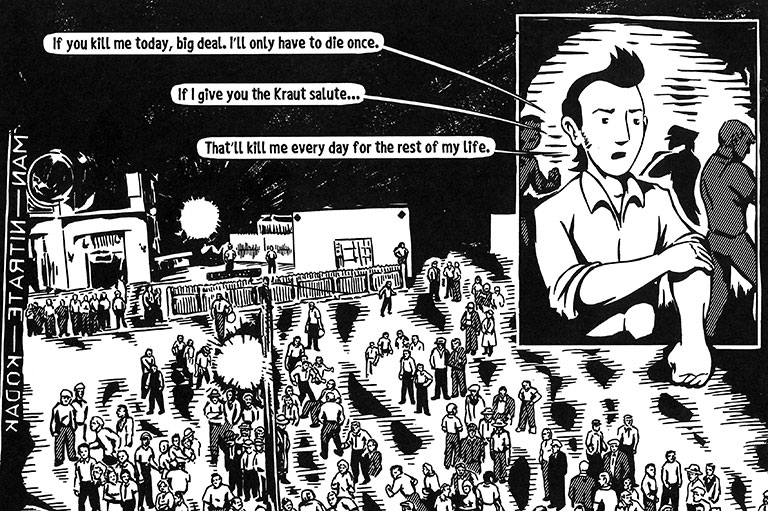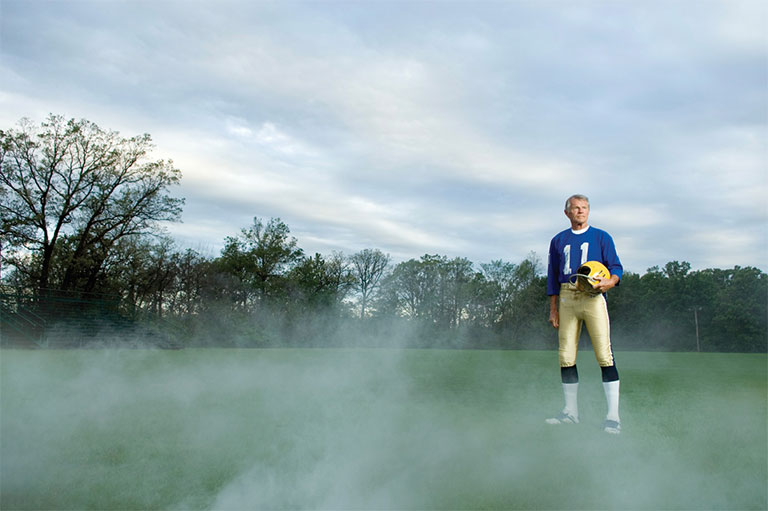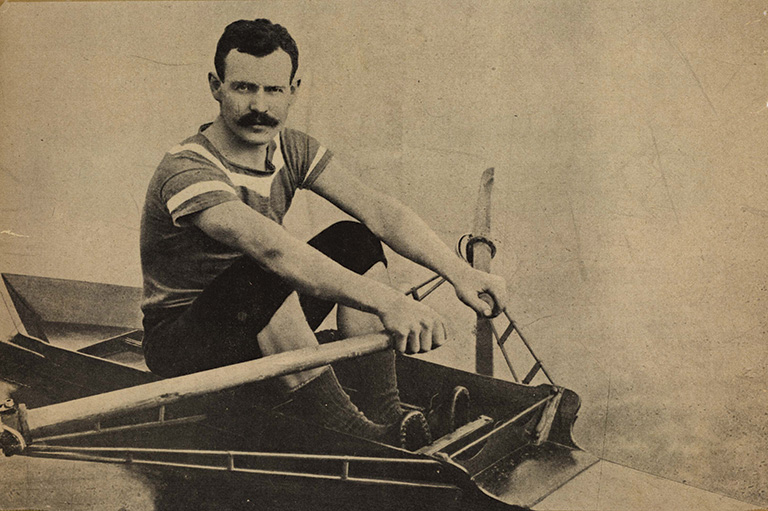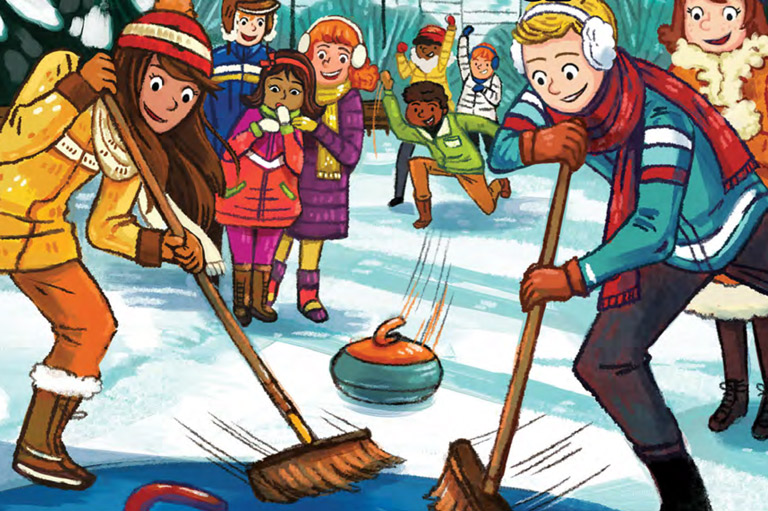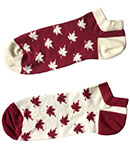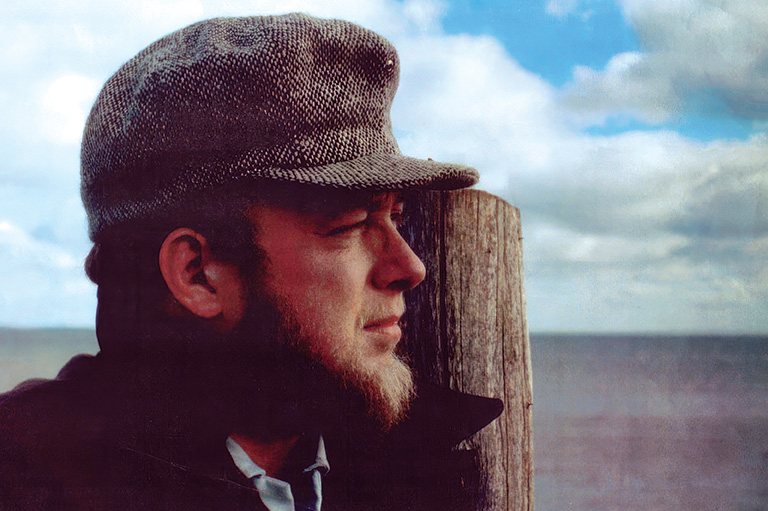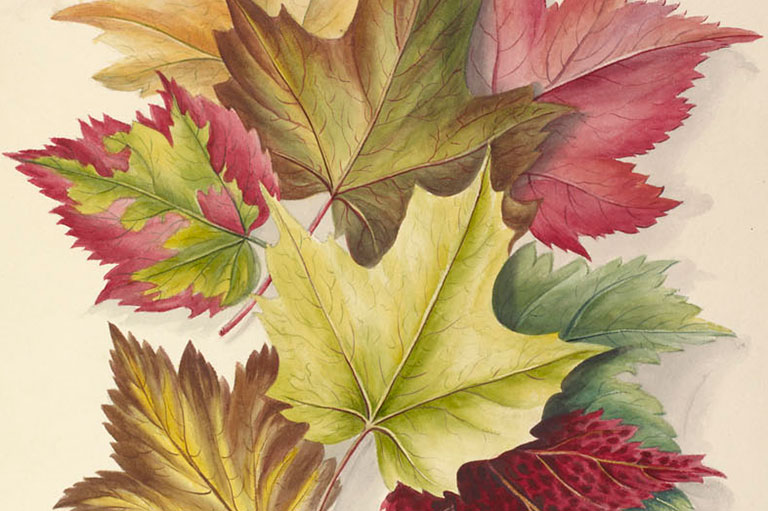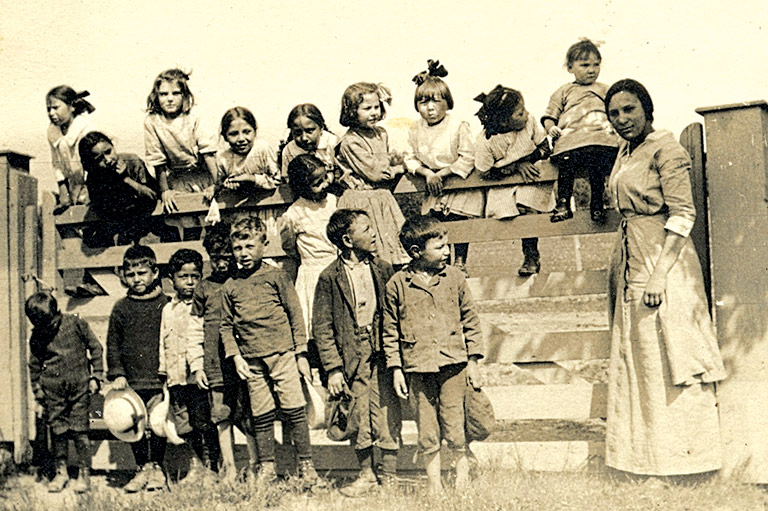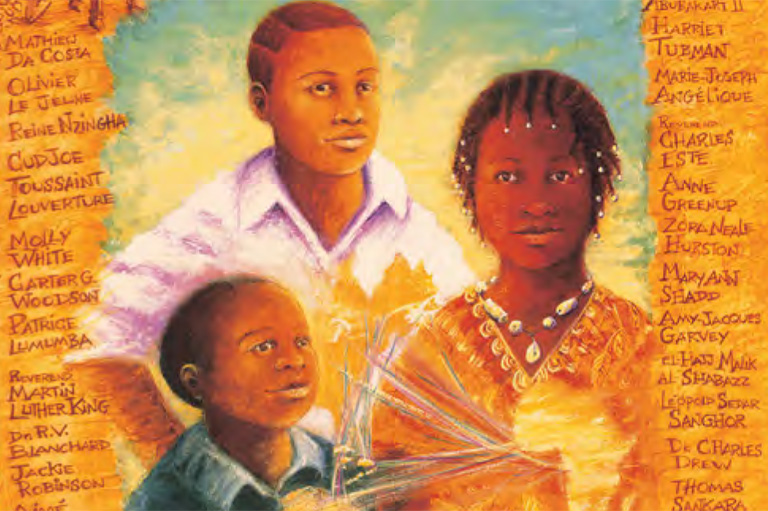Play Ball, Eh?
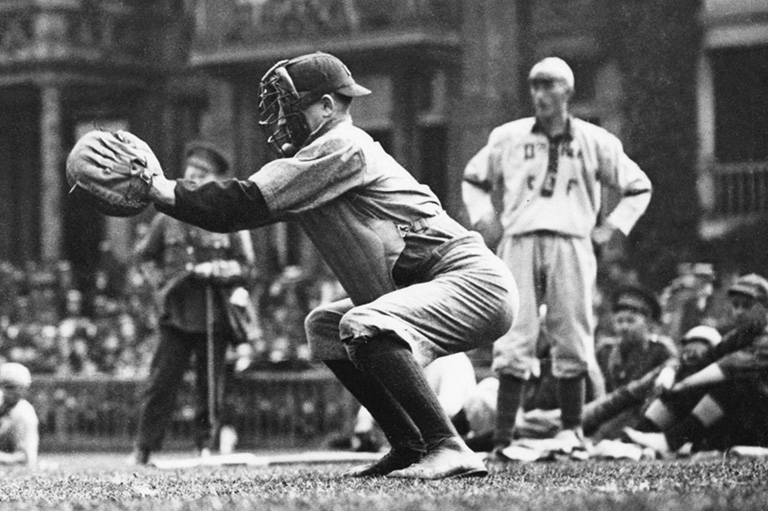
Just because a certain neighbouring country claims baseball as its national pastime doesn’t diminish our two-centuries-long love affair with the game here in Canada. Granted, we have just one major-league team, the Toronto Blue Jays, which played its first season in 1977.
Although the Montreal Expos were the first non-American team to play major-league baseball in 1969, they were ignominiously relocated to Washington, D.C., after the end of the 2004 season and renamed the Nationals.
Look beyond the big leagues, though, and since the earliest days of the 1800s you’ll find enthusiastic Canadian fans besotted with the thinking person’s sport. Today there are thousands of Canadians playing ball, whether on minor-league professional teams, in beer leagues, or with amateur organizations for kids.
So, with the season well underway, it’s time to step up to the plate and swing for the fences of Canadian baseball history with a full game’s worth of lore.
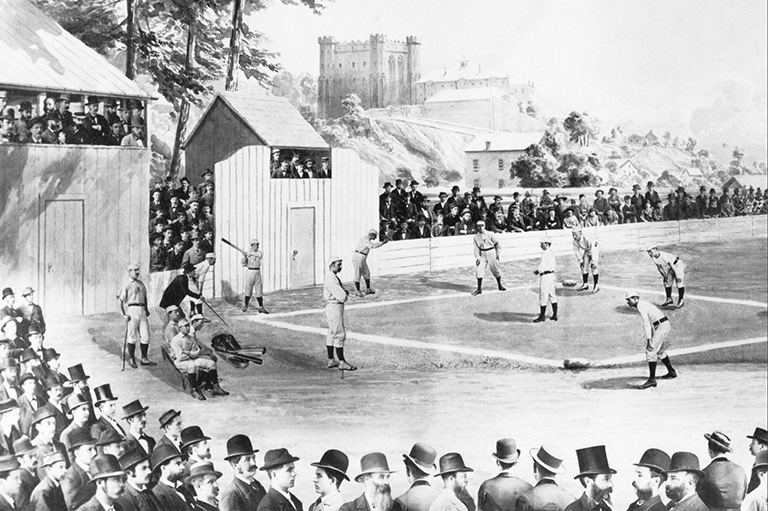
1. We helped to invent the game
Cooperstown, New York, no longer claims to be the legendary place where baseball was invented — in fact, as with so many historical assertions, it’s pretty much impossible to state definitively where the game was born. The term “base ball” appears as early as 1744 in England to describe something we would recognize as a forerunner of today’s game.
By the early 1800s, regional variations of a sport akin to modern baseball were being played across much of both the United States and what would become Canada.
Canadian historians point to the detailed early account of a game of baseball, albeit under somewhat different rules, played in Beachville, Ontario, on June 4, 1838. That game took place a full seven years before a match in Hoboken, New Jersey, that is often referred to as the first official, or first officially recorded, baseball game.
An uncharitable (read “American”) nitpicker might point out that the record we have of the Beachville game comes from memories set down in a letter to Sporting Life magazine by Dr. Adam Ford nearly forty-eight years later. However, Canadian sports historian Bill Humber notes that there is evidence that baseball (or base ball) had been played on June 4 at community celebrations in Beachville since at least 1819.
Although it’s fun to speculate regarding whether Canada deserves credit for inventing the great American pastime, that’s really not the point. “There was no first game,” said Humber, who wrote the authoritative Canadian baseball history Diamonds of the North.
Rather, the sport evolved in different ways in different regions at the same time. Humber points to historical documents that describe baseball-like games being played in the Ontario communities of Port Hope and York (now Toronto) as early as 1803. “All of this says to me that the passage of the game from its folk origins to the modern incarnation was happening here as well as in the U.S.,” Humber said. “We are co-creators with the Americans.”
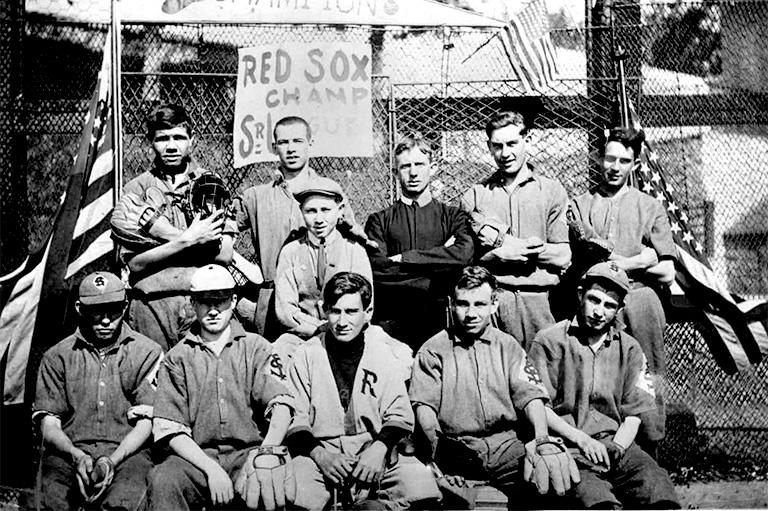
With 7 uniquely curated newsletters to choose from, we have something for everyone.
2. The Babe owes it all to Canada
Perhaps George Herman Ruth Jr. isn’t indebted to the Great White North for all of his well-earned fame. But Ruth, later known as “Babe” and perhaps the greatest baseball player ever, made it clear that without the coaching of a Canadian he would never have amounted to anything. “He was the father I needed,” Ruth said of Brother Matthias, a member of the Roman Catholic Xaverian Brothers who recognized Ruth’s gifts.
Running their bar in Baltimore took all of Ruth’s parents’ attention. George Jr. was left to raise himself, and he didn’t do a very good job. Even when he was a very young boy, it was obvious that George needed firmer guidance if he was to avoid a future of petty crime. A police officer who was also a family friend recommended St. Mary’s Industrial School for Boys to Ruth’s parents.
They agreed, and the officer accompanied George, who was just seven years old, to the place that would change his life. Originally created to house and to educate orphans, the school later accepted boys whose parents simply couldn’t afford to keep them as well as delinquents who were sent there by the courts.
Although the school focused on religious education and on training its students for the workplace, St. Mary’s also believed in strength of body and boasted excellent sports facilities. And that’s where Brother Matthias came in. Born Martin Leo Boutilier in Lingan, on Nova Scotia’s Cape Breton Island, in 1872, Matthias moved to Boston with his family and eventually entered the religious order.
At six feet six and three hundred pounds, Matthias had a physical presence that belied his quiet, introverted nature. He was the school’s head of discipline and also coached baseball. Matthias quickly recognized young Ruth’s talent, suggesting that the boy try pitching rather than catching — which was never the best position for a left-hander, anyway.
He also showed the future “Bambino” the uppercut swing that would eventually become standard for batters (at the time it was thought that a level swing would produce more consistent hitting) and taught him to run the bases faster.
“Brother Matthias played a key role in developing Babe as a baseball player, but he also played a key role in developing him as a man,” said Brian “Chip” Martin, a Canadian baseball researcher and retired journalist whose book The Man Who Made Babe Ruth: Brother Matthias of St. Mary’s School will appear later in 2019. “Without Matthias, Babe’s future was dismal. They shared an incredible bond that I think was good for both of them.”
Ruth never forgot his mentor, buying Matthias a Cadillac and then, when that car was hit by a train, buying him another. Although much of what we think we know about the Babe is pure invention, his love and respect for the towering man of God from Cape Breton Island is beyond doubt. “I saw some real he-men,” Ruth once said, “but I never saw one who equalled Brother Matthias.”
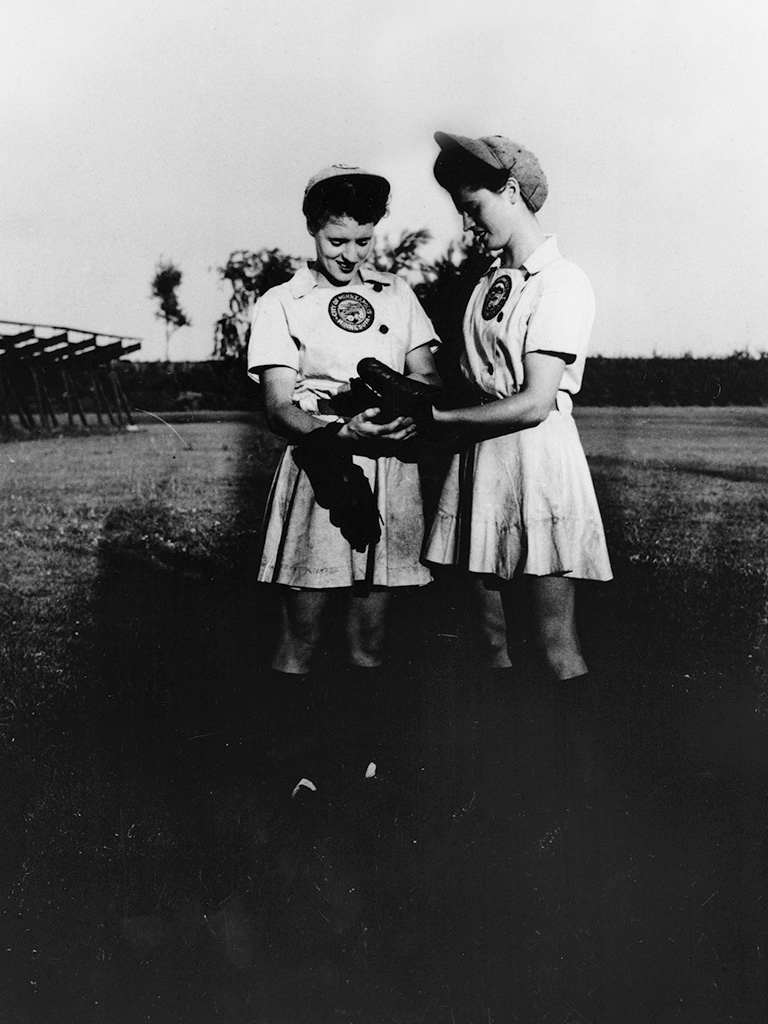
3. Many Canadians played in the ‘All-American’ women’s league
Made famous by the 1992 movie A League of Their Own, the All-American Girls Professional Baseball League began as a replacement for the men’s game during the Second World War and operated until 1954. It drew heavily on Canadian talent to fill its rosters; indeed, the central character in the movie, played by Geena Davis, is said to be based on Mary “Bonnie” Baker of Regina.
An outstanding athlete, Baker was the first Canadian signed to the league and soon became its face, appearing on the cover of the June 4, 1945, edition of Life magazine. Vancouver’s Margaret “Marge” and Helen “Kelly” Callaghan were the first sisters to play in the AAGPBL.
Pitcher Helen Fox from Alberta was the league’s all-time leader in both wins and games pitched. Three-time all-star Eleanor Callow from Winnipeg had the most home runs and triples in league history and ranked third for career runs batted in.
In 1950, Baker was briefly the first female manager in professional sports, until the league’s owners changed the rules to exclude women from such roles.
A disproportionately large number of the sixty-four Canadians in the league came from Manitoba and Saskatchewan; but wherever they called home the women jumped at the chance to play the sport they loved, even if they had to go to charm school and wear short skirts while doing so.
As Helen Callaghan told People magazine in 1987, “We were supposed to play like men and look like women.” The Canadian-born players were inducted as a group into the Canadian Baseball Hall of Fame in 1998, and Baker entered Canada’s Sports Hall of Fame in 2018.
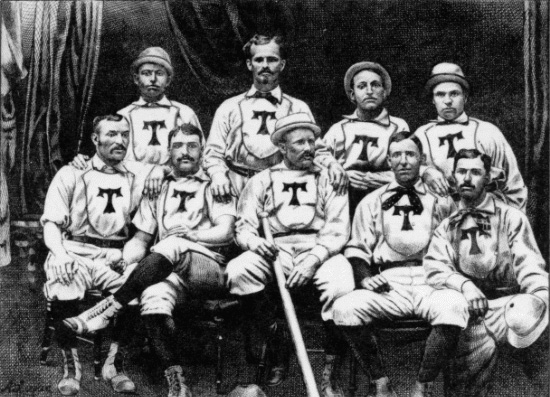
4. The Blue Jays weren’t our first international champions
When the Toronto Blue Jays won the World Series in 1992, it was glorious. When they won again the next year, it was truly sublime — even if, as was widely noted by those attempting a witty observation, the victory was a case of one team’s American and Caribbean players beating another team’s American and Caribbean players.
The word “Toronto” was right there in the team’s name, and that was all that mattered.
But there’s a strong argument to be made that the Blue Jays were not Canada’s first international professional baseball champions.
Granted, leagues and teams shifted, and folded, and reformed seemingly almost weekly in the late 1800s. But, as Chip Martin has documented, the Tecumsehs of London, Ontario, won an international title more than a century earlier, besting a team from Pittsburgh to win the championship of the International Association in 1877.
At other levels of professional and semi-professional baseball, teams including the Vancouver Canadians and their former incarnation, the Capilanos; the Winnipeg Goldeyes; the Ottawa Champions and an earlier team in the capital, the Lynx; the Trois-Rivières (Quebec) Aigles; and the Québec Capitales have all won international championships, as have Canadian amateur men’s, women’s, and youth teams.
And our teams continue to be top contenders in international competitions, with the Canadian men winning gold at the 2015 Pan American Games and our women taking silver medals.
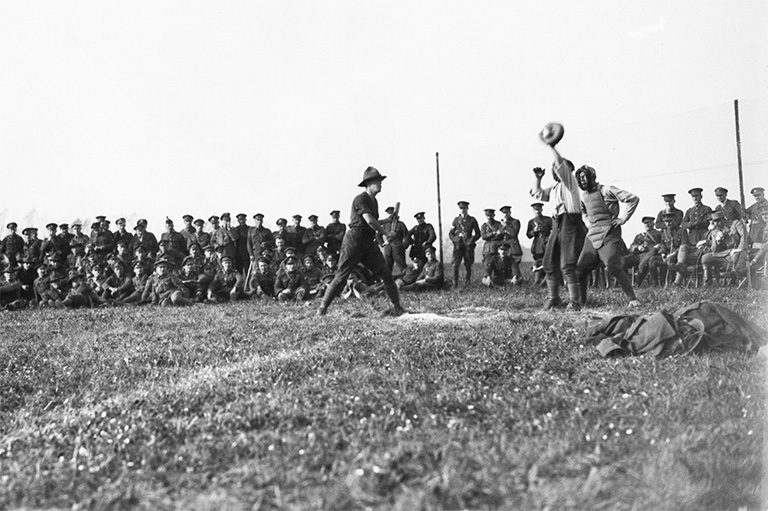
5. Baseball was an essential pastime during the wars
Amid the uniforms and guns and heartbreaking letters on display at the Canadian War Museum in Ottawa, the much-used baseball bat and cap seem out of place. However, “baseball was an officially sanctioned part of the war effort,” said Stephen Dame, a Toronto teacher and amateur baseball historian. “It was something you could play in large numbers. It didn’t need a special surface.”
The sport gave soldiers something to do in their downtime that kept them fit, boosted morale, and allowed for individual accomplishment as part of a team effort, Dame added.
In the First World War, soldiers played whenever they could, whether in pickup games or in organized leagues. “The moment our men get out of the trenches, they are playing baseball,” noted Lieutenant Coningsby Dawson, a British-American novelist who served with the Canadian Expeditionary Force.
Indeed, it was Canadians who popularized baseball in Great Britain, playing before large and enthusiastic crowds at legendary locations such as Lord’s Cricket Ground, in London, and Windsor Great Park, south of Windsor, the latter with King George V among the spectators.
Dame has amassed persuasive evidence that members of the all-black No. 2 Construction Battalion and white players from the Canadian Forestry Corps took the field as an integrated team in a game played at Windsor — something that would have been unthinkable at the time back home.
Both baseball and softball continued to be sources of relaxation and comfort during the Second World War, but they served other purposes, too. Military baseball leagues in Britain pitted Canadians and, later, Americans against each other in games that were both public-relations stunts and effective fundraisers.
Soldiers recuperating from injuries circulated through the crowds to explain the game. With British professional sports such as cricket and soccer suspended, wartime fans welcomed the new pastime.
The games raised money for a wide range of causes, from the Merchant Navy Comfort Service and the Red Cross to the purchase of warplanes and tanks. At one game between Canadian and American teams in 1943, a Lancaster bomber sat on the outfield, and attendees could purchase stamps to stick on a bomb destined to be dropped over Germany.
“Baseball played a real and significant role in raising money for the war effort,” said Dame, estimating that in 1943 alone ball-playing North Americans helped to raise an amount equivalent to $5.5 million dollars today.
Baseball was also a lifeline for soldiers in unhappier circumstances. For instance, in the long, tension-filled hours before launching the August 1942 raid on Dieppe, France, Canadians played ball. And as the war crawled to its finish Canadian soldiers continued to play during breaks in the action.
“On the west bank of the Rhine, north of Cleve, Canadian soldiers are playing baseball where just days ago German shells were falling,” said a story in the April 2, 1945, Liverpool Daily News. Even in Nazi prisoner of war camps, Canadians kept their spirits up through inning after inning of their favourite sport.
Baseball’s ability to divert and to entertain was rarely more important than at the end of the Second World War, noted Dame. “When there was a concern that soldiers were going to have to wait a while before they could go home, they turned to baseball.”
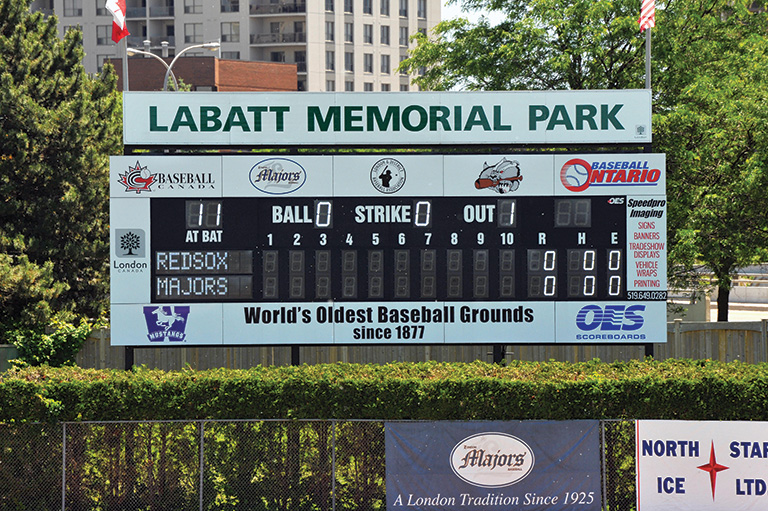
Save as much as 40% off the cover price! 4 issues per year as low as $29.95. Available in print and digital. Tariff-exempt!
6. Canada has the world’s oldest ballpark
Just ask the record-keeping folks at Guinness — London, Ontario’s Labatt Memorial Park has been hosting games longer than any other ballpark. It was originally known as Tecumseh Park and was named after the title-winning team that played there, which was itself named after the legendary Shawnee chief.
The first game played in the ballpark located beside the Thames River took place in May 1877, a year before any American contenders for the historical title were in operation.
In 1936, when the park faced financial trouble, the Labatt brewing family stepped in, buying the property and donating money for its upkeep. There were two conditions: The donors requested that the facility be kept for public use and that it be renamed Labatt Memorial Park.
The ballpark has hosted players ranging from the great Satchel Paige to a young Wayne Gretzky and was declared a historic site by the province in 1994. Supporters are campaigning for a national historic designation.
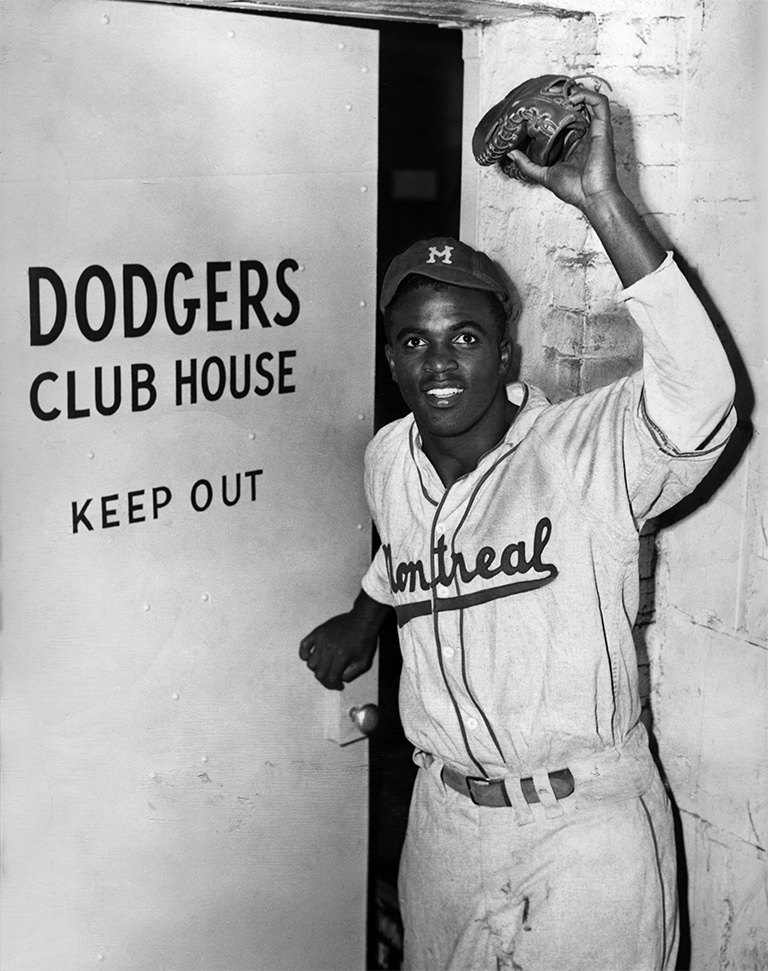
7. This is where the colour barrier became history
In April 18, 1946, the legendary Jackie Robinson took the field in Jersey City, New Jersey, with the Montreal Royals, then the farm team for the Brooklyn Dodgers. The first black man to play major-league baseball in the modern era always credited Montreal and its residents for supporting him during his crucial first days in an all-white system.
“I owe more to Canadians than they’ll ever know. In my baseball career they were the first to make me feel my natural self,” Robinson once said.
During spring training, some other teams refused to play the Royals due to Robinson’s presence. “When we got to Montreal it was like coming out of a nightmare,” said his wife Rachel Robinson. “The atmosphere in Montreal was so positive.”
When the season ended, Royals fans knew Robinson was headed for greatness, but they proved a bit too enthusiastic in expressing their appreciation. Robinson had to make his getaway from the adoring crowd, prompting a Pittsburgh Courier writer’s memorable observation that “it was probably the only day in history that a black man ran from a white mob with love instead of lynching on its mind.”
Robinson’s story is familiar to many Canadians who may not be aware that Ontario’s Chatham Coloured AllStars also made history, when the all-black team won the Ontario Baseball Amateur Association’s Intermediate B championship in 1934.
Players such as the legendary Earl “Flat” Chase and Wilfred “Boomer” Harding were tremendously talented and a huge draw wherever they appeared, but that didn’t mean other white teams or their communities welcomed them.
“Segregation was real. There’s a tendency to downplay that in Canada,” said Miriam Wright, an associate professor of history at the University of Windsor and a co-founder of the online Breaking the Colour Barrier project, which uses material gathered from interviews, newspapers, scrapbooks, and other sources to tell the story of the team and its legacy.
Members of the All-Stars were talented athletes, but they were repeatedly denied the opportunity to play baseball at a higher level and frequently endured insults and abuse. “They talked about people throwing stuff at them and being called horrible names,” said Wright.
Team members were regularly denied service at restaurants and stores, and several of the players recalled the team being turned away from a hotel in Penetanguishene, where the All-Stars played for the 1934 championship. The group behind the online commemoration project has created a set of baseball cards for the barrierbreaking All-Stars.
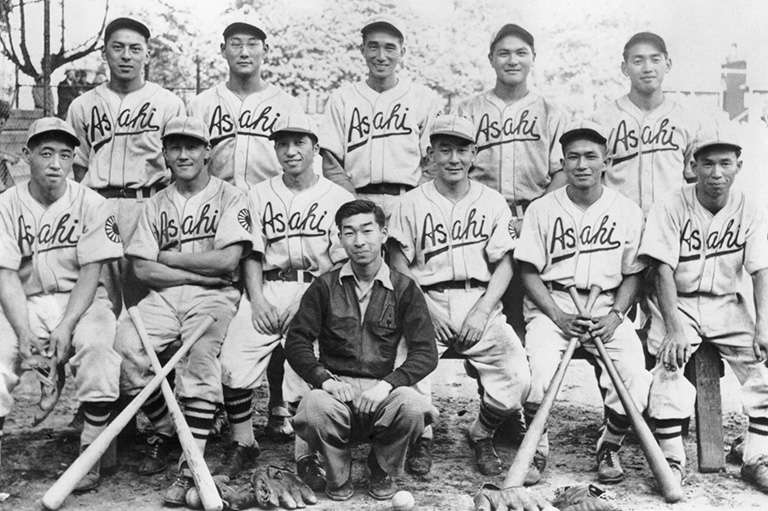
8. But racism also destroyed a beloved team
Starting in the early 1900s, almost anywhere in British Columbia that was home to communities of Nikkei — people of Japanese descent — also had a baseball team. The Vancouver Asahi club formed in 1914 and quickly came to dominate its amateur Japanese-Canadian competitors. In an era of big men slugging big hits, the Asahi players instead relied on tactics such as bunting and aggressive base-running to create what the newspapers dubbed “brainball.”
In 1919 the team won its first Vancouver International League championship, and it went on to win multiple titles in various city leagues in the 1920s and 1930s, as well as several Pacific Northwest Japanese baseball championships — including in each of the team’s last five seasons, from 1937 to 1941.
The Asahi baseball team was a source of pride for British Columbia’s Nikkei, who at the time were prevented from voting, holding office, or entering many occupations. Baseball was a rare place where Japanese Canadians earned respect among all types of fans. But when Canada declared war against Japan in 1941 all Nikkei were designated as “enemy aliens.”
The government seized their homes and businesses and sent them to internment camps. In a cruel twist of fate, during the process many were detained at Vancouver’s Hastings Park, where the Asahi team had trained. Some players took their equipment with them, forming teams and continuing to play baseball while interned.
The Vancouver Asahi team was inducted into the Canadian Baseball Hall of Fame at an emotional ceremony in 2003 and then into the BC Sports Hall of Fame in 2005. Historica Canada released a Heritage Minute celebrating the team earlier this year. Today the Asahi Baseball Association in Vancouver fields teams of Nikkei youth while sharing the history of Japanese-Canadian baseball.
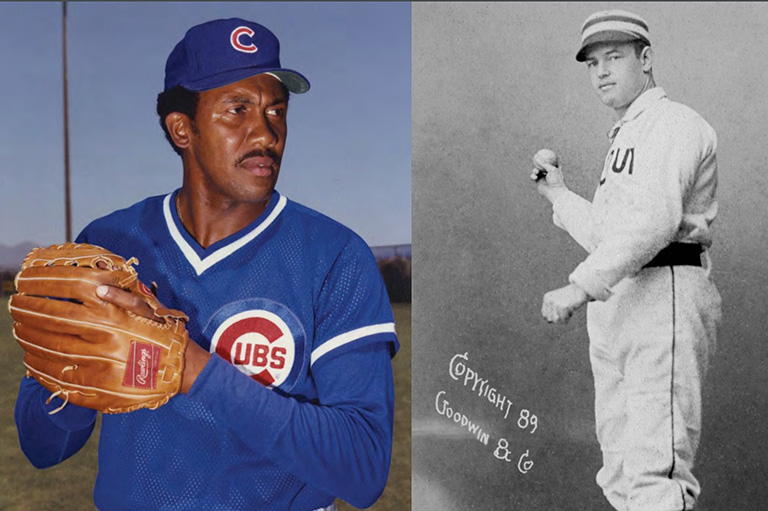
9. We’ve contributed legendary players
A highly unscientific poll of baseball historians and überfans in Canada, with a contribution from John Thorn, chief historian for Major League Baseball (the organization that oversees higher levels of the professional game in North America), reveals a remarkable consensus on the bestever Canadian male players. Here’s how we rank them:
1. Ferguson “Fergie” Jenkins (born in Chatham, Ontario)
Still the lone Canadian in the U.S. National Baseball Hall of Fame, Ferguson Jenkins started his career in 1965 with the Philadelphia Phillies but achieved his greatest renown as a player for the Chicago Cubs. The 1971 Cy Young Award winner had six consecutive seasons with twenty or more wins and retired in 1983 as the only pitcher with three thousand strikeouts and fewer than a thousand walks.
2. Larry Walker (born in Maple Ridge, B.C.)
Debuting with the Montreal Expos in 1989, but released by the cash-strapped club in 1994, Larry Walker eventually picked up seven Gold Glove Awards for his fielding, three Silver Slugger Awards, three batting titles, and the coveted National League Most Valuable Player Award before retiring in 2005.
3. James “Tip” O’Neill (born in Springfield, Ontario)
James O’Neill, known as the “Woodstock Wonder,” is sometimes called Canada’s Babe Ruth and was a household name during a pro career that started in 1875. A strong pitcher and outfielder, he was an even stronger batter and in 1887 won baseball’s first triple crown — an honour that involves one player achieving the highest batting average, the most home runs, and the most runs batted in. He still owns the secondhighest batting average in major-league history. A trophy in his name is awarded annually to the best Canadian player in the major leagues.
4. Joey Votto (born in Toronto)
Hard-slugging Cincinnati Reds first baseman Joey Votto came second in rookie-of-the-year voting in 2008. In 2010 he won the National League’s Most Valuable Player Award while sharing the Hank Aaron Award for top hitter. The sixtime all-star has been open about the anxiety and depression that led to him briefly leaving the game in 2009 following his father’s untimely death.
5. Tie: Russell Martin (born in Toronto) and James Paxton (born in Delta, B.C.)
We refuse to choose between present-day players Russell Martin, the affable and bilingual former Toronto Blue Jays catcher who grew up in Ottawa and Montreal, and James Paxton, the man they call “Big Maple” and who on May 8, 2018, became the first Canadian to throw a no-hitter on Canadian soil as his Seattle Mariners beat the Blue Jays.
We hope you’ll help us continue to share fascinating stories about Canada’s past by making a donation to Canada’s History Society today.
We highlight our nation’s diverse past by telling stories that illuminate the people, places, and events that unite us as Canadians, and by making those stories accessible to everyone through our free online content.
We are a registered charity that depends on contributions from readers like you to share inspiring and informative stories with students and citizens of all ages — award-winning stories written by Canada’s top historians, authors, journalists, and history enthusiasts.
Any amount helps, or better yet, start a monthly donation today. Your support makes all the difference. Thank you!
Themes associated with this article
Advertisement
You might also like...

Canada’s History Archive, featuring The Beaver, is now available for your browsing and searching pleasure!

